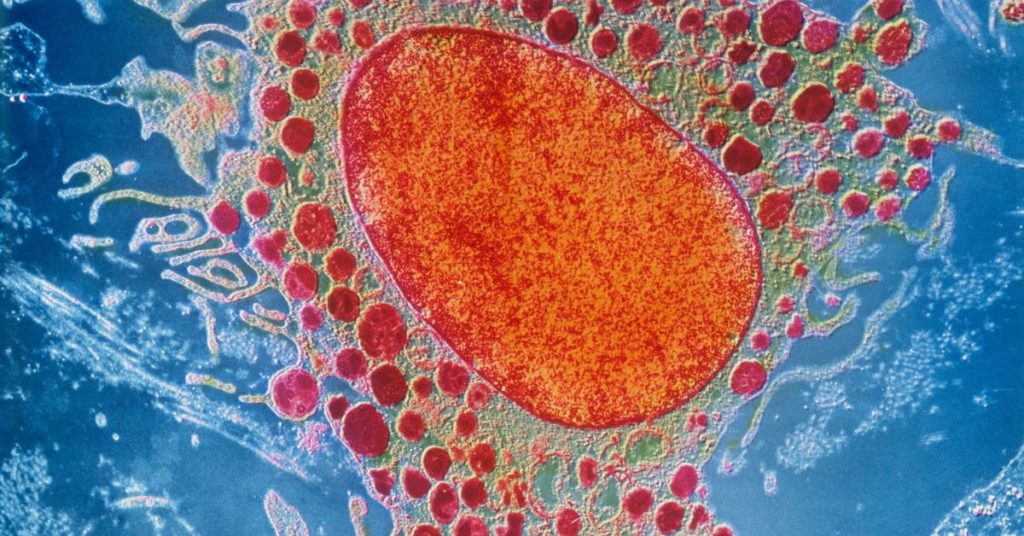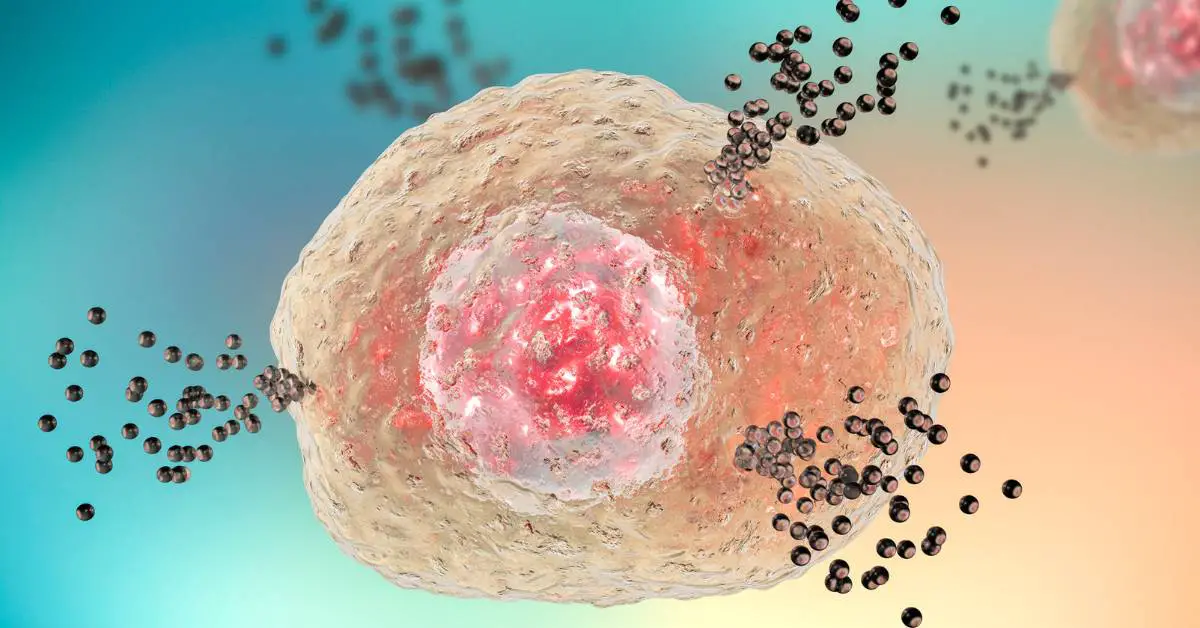How long does it take for histamine to go down after eating high-histamine foods? It’s a common question people with histamine intolerance have – and for good reason! You want to avoid the unpleasant symptoms of histamine intolerance.
Histamine, a type of biogenic amine, is a chemical that immune cells release as part of the immune response. But it’s not just a one-trick pony! It is also a neurotransmitter in the brain. There, it plays a role in wakefulness and helps regulate other neurotransmitters.
So you need a certain amount of histamine for health, but if you have histamine intolerance, your levels can rise too high, because you can’t break histamine down effectively. That’s when histamine can cause problems, including the unpleasant symptoms of histamine intolerance.
Suppose you unintentionally ate a high-histamine food and developed symptoms eating it. You might wonder how quickly you’ll clear histamine and get relief from your symptom? Let’s take a closer look.
How You Break Down Histamine
When you consume high-histamine foods, the histamine from those foods enters your bloodstream and travels throughout your body where it can affect other tissues.
How fast histamine breaks down to an inactive form after eating high-histamine foods depends on the totality of your diet (how many other high-histamine foods you ate recently), your tolerance to histamine, and your body’s ability to break down histamine.
The main enzyme that breaks down histamine in your bloodstream is called diamine oxidase (DAO). (1) If you have histamine intolerance, your body lacks the resources it needs to efficiently break down histamine.
When you can’t break down histamine fast enough, it starts to build up and trigger histamine intolerance symptoms.
Since cells that line your intestinal tract produce diamine oxidase, gut problems, such as poor gut health, a disrupted gut microbiome, and inflammatory conditions of the gut, can reduce diamine oxidase and cause histamine to stay longer in your system.(2) Cells in your liver, kidneys, and white blood cells also produce diamine oxidase.
If you have very low levels of diamine oxidase, histamine may stay in your system for a prolonged time after eating high-histamine foods. The less diamine oxidase you have and the more high-histamine foods you consume, the more extended the symptoms will be.
Histamine N-methyltransferase (HMT) is another enzyme that breaks down histamine. It isn’t as important as DAO for breaking down histamine. However, it affects how the cells in your respiratory tract respond to histamine and how quickly they degrade it. (3)
Histamine Starts to Drop Within Hours after Eating a High-Histamine Food
What happens when you eat a high-histamine food? It adds to your body’s histamine burden. If you don’t have enough enzymes (DAO and HMT) to break it down, you could experience histamine intolerance symptoms.
Histamine intolerance manifests itself in a variety of signs and symptoms such as: (5)
- Pruritus (itching especially of the skin, eyes, ears, and nose)
- Urticaria (hives) (sometimes diagnosed as “idiopathic urticaria”)
- Tissue swelling (angioedema) especially of facial and oral tissues and sometimes the throat, the latter causing the feeling of “throat tightening” (sometimes diagnosed as “idiopathic angioedema”)
- Headaches and migraines
- Diarrhea
- Flushed skin
- Hives or an itchy skin rash
- Worsening eczema, or a condition that causes itchy and flaky rashes
- Congested, runny, or itchy nose
- Red, itchy, or watery eyes
After reading this list, it’s easy to see that histamine intolerance symptoms are quite variable. Your experience may be different than someone else’s.
Typically, histamine levels begin to decline within a few hours after consuming a high histamine food. Yet, it can take 24 hours or longer before your histamine levels drop enough for your symptoms to lessen. Find out more about what happens after adopting a low-histamine diet.

The Low-Histamine Diet to Treat Histamine Intolerance Symptoms
The standard treatment for histamine intolerance is a low-histamine diet. There is also a role for supplements, as well as lifestyle changes, including stress management.
Adopting a low-histamine diet means avoiding foods naturally high in histamine. Some foods you’ll want to avoid include fermented foods, aged cheeses, cured meats, seafood, citrus fruits, and alcohol.
Success with a low-histamine diet also means avoiding foods that can trigger the release of histamine from immune cells (histamine liberators), such as chocolate, eggs, additives, coffee, tea, dried fruits, peanuts, and some spices.
On a low-histamine diet, you’ll want to choose the freshest foods, as fresh foods are less likely to have been exposed to bacteria that produce histamine. You’ll also want to select foods and beverages that aren’t naturally high in histamine, and ones unlikely to stimulate your body’s natural production of histamine.
Some low-histamine options include fresh meats, poultry, fish, eggs (in small quantities), dairy alternatives (rice milk, almond milk, coconut milk), fresh fruits and vegetables (except spinach, eggplant, tomatoes, and pumpkin), grains (rice, oats, quinoa), low-histamine nuts and seeds, and herbs with antihistamine activity.
Even if you choose carefully, you won’t see an immediate effect when you start. Let’s look at how long it takes to see results once you adopt a low-histamine diet.
How Long Does It Take to Respond to a Low-Histamine Diet?
Another question you might have is how long it takes for histamine intolerance symptoms to lessen once you start a low-histamine diet and eliminate or greatly reduce all high-histamine foods and histamine liberators from your diet.
If you’re diligent with your diet and manage other factors that can affect your body’s ability to break down histamine, you should experience clearing of histamine intolerance symptoms in 3 to 4 weeks.
However, the timing is variable, depending on the degree to which you can break down histamine and how much of the key enzymes (DAO and HMT) you have to break down histamine and clear it from your body.
Plus, factors like medications, the amount of stress you’re under, sleep quality, and factors like seasonal allergies, which can raise your histamine level, can affect how quickly your symptoms improve.
So, you’ll need to address other factors that can contribute to high histamine levels or impaired histamine breakdown in your body, such as gut health issues (6), liver problems, chronic stress, injury, trauma, or medication use. All of these factors place stress on your body and can trigger histamine release.

Track Your Symptoms
A food journal can be a helpful tool to monitor your histamine intake and its effects on your body. (4) A food journal is a record, usually in a journal form, of what you eat or drink. Beside each entry, you include when you ate it, how much you consumed, and the symptoms you experienced afterwards. Keep in mind histamine intolerance symptoms may be delayed by up to 24 hours. By keeping a food journal, you can:
- Identify which foods cause or worsen your symptoms
- Identify which foods are safe or beneficial for you
- Evaluate how your symptoms change over time
- Evaluate how your symptoms are affected by other factors such as stress, sleep, exercise, medication, etc.
- Plan your meals and snacks according to your needs and preferences
- Share your information with your doctor or nutritionist for further guidance
To start a food journal, you can use several approaches. A notebook, a spreadsheet, or an app. These are methods many people choose, but you can use any method that works for you. You can also download or print some templates online that help organize your data. Here are some tips on how to keep a food journal for histamine intolerance:
- Record everything you eat and drink throughout the day, including the time, amount, ingredients, preparation method, and brand name if applicable. Be as detailed as possible and include any supplements or medications you take as well.
- Record any symptoms you experience before and after eating or drinking, including the time, type, severity, duration, and location of the symptoms. You can use a scale from 0 to 10 to rate the severity of your symptoms or use descriptive words such as mild, moderate, severe, etc.
- Record any other factors that may affect your symptoms or histamine levels, such as stress level, mood, sleep quality and quantity, exercise type and intensity, menstrual cycle phase (for women), environmental factors (such as temperature, humidity, pollen count), etc.
- Review your food journal regularly, and look for patterns or correlations between what you eat and drink and how you feel. You can use color codes or symbols to highlight foods that cause or worsen your symptoms or foods that are safe or beneficial for you. You can also use graphs or charts to visualize your data and trends over time.
- Experiment with different foods and see how they affect you. However, always consult with your doctor before making any significant changes to your diet, and do not eliminate any food groups without medical supervision.
- Adjust your diet according to your findings and preferences. Based on your food journal data, you can create a personalized low-histamine diet plan that suits your needs and goals. You can also consult with a nutritionist who specializes in histamine intolerance for further advice and support.
A food journal can be a valuable tool to help you manage histamine intolerance and improve your quality of life. When you track what you eat and drink, and how you feel after consuming certain foods, you gain insight into how to better manage your condition and what triggers your histamine intolerance symptoms. Plus, with this knowledge, you can better tailor your diet to avoid symptoms.
Remember that histamine intolerance is not a one-size-fits-all condition and that everyone responds differently to different foods. Therefore, it is important to listen to your body and find what works best for you.
How Long Does It Take for Histamine to Go Down?
The most reliable way to avoid the symptoms of histamine intolerance is to limit high-histamine foods, such as aged cheese, cured meats, fermented foods, and alcohol. You can also take supplements, like DAO or probiotics to help improve the body’s ability to break down histamine, although that’s a topic for a future article. It is essential to identify and avoid high-histamine foods to help manage symptoms and improve overall health.
References:
- Significance of the Intestinal Gradient of Diamine Oxidase Activity (2023). Available at: https://www.karger.com/Article/PDF/171249 (Accessed: 28 April 2023).
- “Histamine, Histamine Degradation, and Histamine Intolerance.” https://www.clinicaleducation.org/resources/reviews/histamine-histamine-degradation-and-histamine-intolerance/.
- Yamauchi K, Sekizawa K, Suzuki H, Nakazawa H, Ohkawara Y, Katayose D, Ohtsu H, Tamura G, Shibahara S, Takemura M, et al. Structure and function of human histamine N-methyltransferase: critical enzyme in histamine metabolism in airway. Am J Physiol. 1994 Sep;267(3 Pt 1):L342-9. doi: 10.1152/ajplung.1994.267.3.L342. PMID: 7943261.
- “Keep a food diary to track allergies or intolerances.” https://www.health.harvard.edu/daily_health_tip/keep-a-food-diary-to-track-allergies-or-intolerances.
- Comas-Basté O, Sánchez-Pérez S, Veciana-Nogués MT, Latorre-Moratalla M, Vidal-Carou MDC. Histamine Intolerance: The Current State of the Art. Biomolecules. 2020 Aug 14;10(8):1181. doi: 10.3390/biom10081181. PMID: 32824107; PMCID: PMC7463562.
- Schnedl WJ, Enko D. Histamine Intolerance Originates in the Gut. Nutrients. 2021 Apr 12;13(4):1262. doi: 10.3390/nu13041262. PMID: 33921522; PMCID: PMC8069563.

